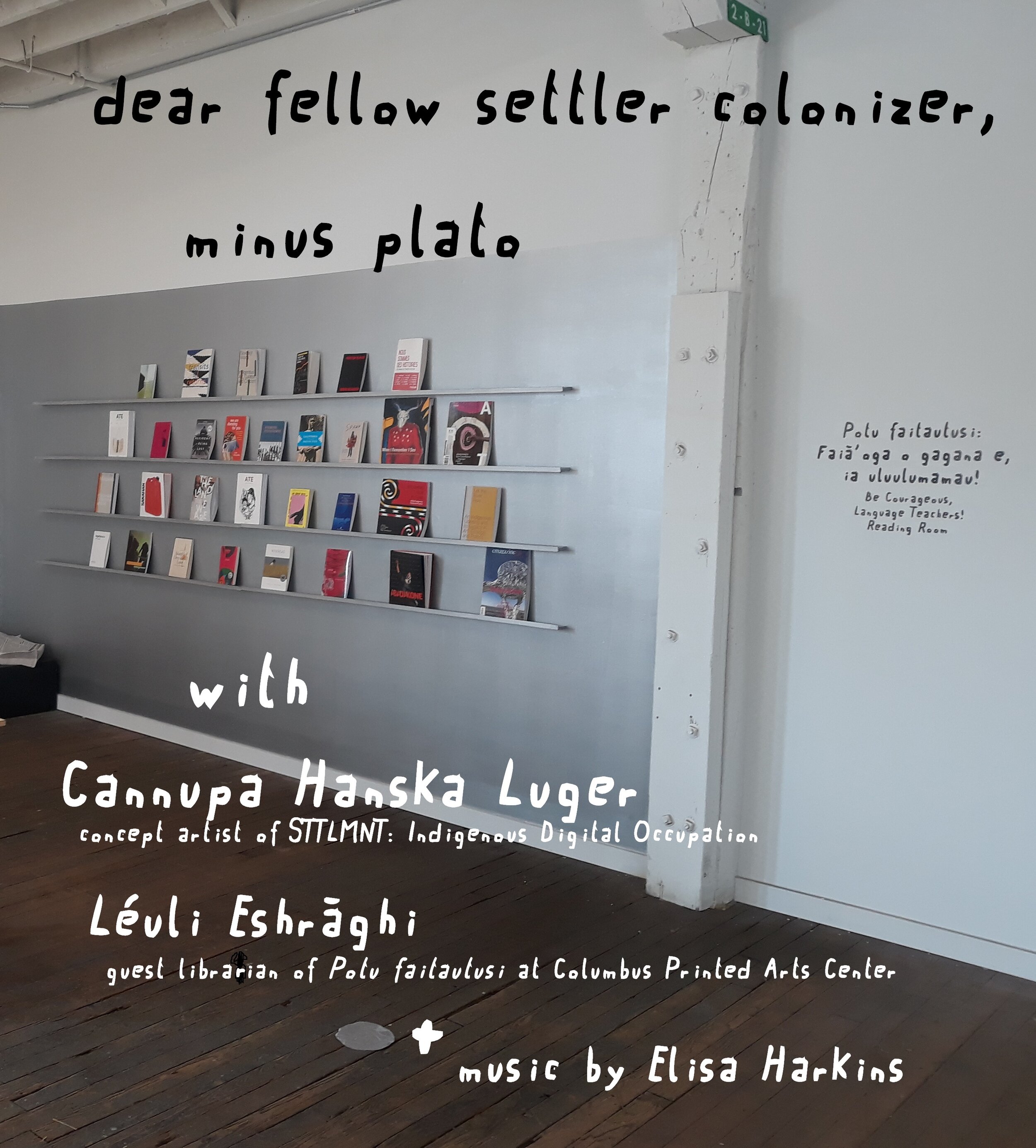"dear fellow settler colonizer," A Minus Plato broadcast. Episode 3
"dear fellow settler colonizer," is a Minus Plato series, rebroadcast on Broken Boxes for STTLMNT Digital Occupation as resource archive directed towards education of settler ancestors who may like to more relationally engage with work created by and centering Indigenous artists, such as with the STTLMNT project.
“The show will explore the transformative work of contemporary global Indigenous artists from the explicitly problematic perspective of the settler colonizer. By critically examining our complicity in ongoing structures of colonial violence, the show offers tools for settler colonizers to engage with Indigenous artmaking beyond positions of exploitation, appropriation and other harmful moves to innocence.” - Minus Plato
"This episode will focus on Indigenous languages and our position as settlers in relation to contemporary Indigenous artists' use of and engagement with Indigenous language learning, publication and other forms of distribution. At the heart of this episode is a wide-ranging conversation with Cannupa Hanska Luger, concept artist of STTLMNT: Indigenous Digital Occupation, about the place of language in their recent work EACH/OTHER (with Marie Watt) and how Indigenous language learning builds community while also transforming the English language from within. The episode also engages with Potu faitautusi: Faiāʻoga o gagana e, ia uluulumamau!, which translates from the Sāmoan language as ‘Be Courageous, Language Teachers! Reading Room', an ongoing project at Columbus Printed Arts Center. We hear from guest librarian Dr Léuli Eshrāghi about how they and other participating artists (including Sarah Biscarra Dilley and Sebastián Calfuqueo Aliste) gather books on Indigenous art and philosophy and create prints with an Indigenous language phrase, proverb or concept to generate a constellatory syllabus grounded in sensual, spoken and marked languages. Léuli offers a description of their new limited edition print created for the project which includes a precolonial Sāmoan prayer and is now available to buy on the Columbus Printed Arts Center website. Throughout the episode, you will hear samples from Elisa Harkins' album Radio III / ᎦᏬᏂᏍᎩ ᏦᎢ mixing disco beats with singing in the Cherokee and Muscogee Creek languages. The album is available from Western Front Recordings and on Harkins’ Bandcamp as a digital download or vinyl LP." - Minus Plato




